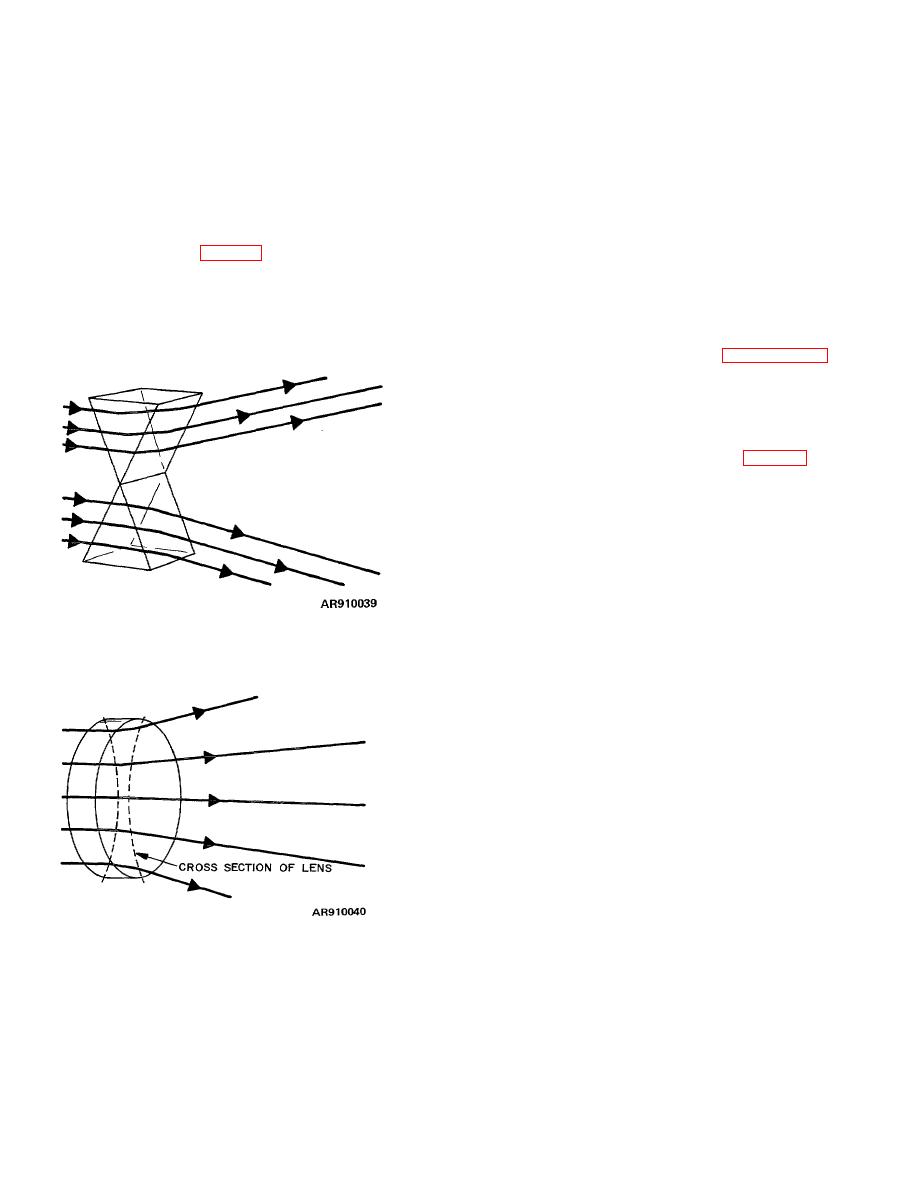 |
|||
|
|
|||
|
Page Title:
Figure 2-33. Deviation of rays by two prisms, apex to apex |
|
||
| ||||||||||
|
|
 TM 9-258
b. Divergent Lens. A lens of a different type can be
2-16. Total Internal Reflection and Critical Angle.
approximated by placing two prisms apex to apex (fig 2-
33). If rays of light strike the front surfaces of the prisms,
a. When light passing from air into a more optically
the rays will pass through and, in accordance with the
dense medium, such as glass, strikes the boundary
law of refraction, those passing through the upper prism
surface, it is refracted. This occurs regardless of the
will travel upward while those passing through the lower
incident angle except when light is on the normal (no
prism will travel downward. Now assume that the front
refraction occurs). However, when light attempting to
and rear surfaces of this pair of prisms have been
leave a more optically dense medium for a less optically
rendered spherical and that the two prisms have been
dense medium strikes the boundary surface, it may be
converted into a lens (fig 2-34). All rays of light, except
reflected rather than refracted even though both
the axial ray, passing through this lens would spread out
mediums are perfectly transparent. This is known as
or diverge but instead of splitting in two at the axis would
total internal reflection and occurs when the incident
diverge evenly in a spherical manner. This type of lens
angle exceeds a certain critical angle. The critical angle
is known as a divergent lens. (All divergent lenses are
depends upon the relative indices of refraction of the
thicker at the edges than at the center.
media. Critical angles for various substances, when the
external medium is air, are listed in paragraph 2-17.
b. The total internal reflection of light can be
illustrated by following the rays from a light source under
water. Water has a critical angle of 480 36 minutes,
when the external medium is air. Rays of light from such
a source would be incident at various angles on the
surface separating the water and air (fig 2-35). As the
angle of incidence of the light rays increases, the
deviation of the refracted rays becomes proportionately
greater. A point is reached where an incident ray is
deviated to such an extent that it travels along the
surface of the water and does not emerge into the air.
The angle formed by this incident ray and the normal is
the critical angle of the medium.
Figure 2-33. Deviation of rays by two prisms, apex to
apex.
Figure 2-34. Deviation of rays by divergent lens.
2-23
|
|
Privacy Statement - Press Release - Copyright Information. - Contact Us |